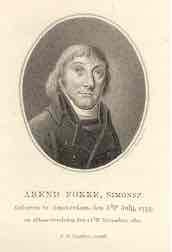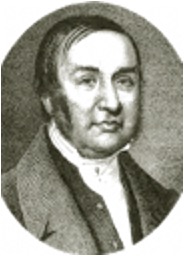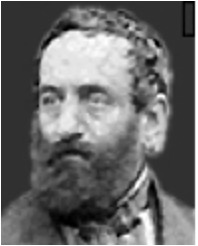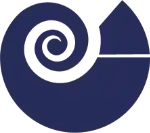This article is about hypnosis and what’s in a name. How the. hypnosis literature usually gives credit were it is not due.
Names for hypnotherapy and its precursors
Hypnotherapy is more than just hypnosis.
It is a therapeutic technique combined with hypnosis.
This in itself is not new.
There are more examples in the history of hypnosis in which a particular treatment was combined with trance.
It seemed better for therapists to come up with a separate name.
Even the trance arousal itself was sometimes given different names.
Often this had a political background.
In the French era, Dutch people who had no sympathy for the French occupier chose the German term “animalic magnetism,” and nowadays stage hypnotists who do not want to get into trouble because of a ban on hypnosis, for example, as is the case in Belgium, call themselves “illusionists.
Honorable women, girls and effeminate men threatened.
According to Arend Fokke Simonsz (1814), manipulate is an art word borrowed from magnetizers.
According to him, it means to touch and feel all around with the hand to induce a magnetic sleep by gently moving over the patient’s limbs.
He is supported by the Leiden professor F.J. Voltelen, who in a speech in1791 vehemently opposes animal magnetism, which also threatened to gain a foothold in the Netherlands.
He sees the honorable women, girls and effeminate men especially threatened and calls the physical rubbing of the lower abdomen, loins and groin manupilation or groping.
He goes further and writes, “Those named who are properly magnetized, (pardon me for using a new word for a new thing).” He further indicates that in addition to physical touching of the body, the imagination also plays a role around animal magnetism.
Over time, the expression manipulate acquired a decidedly negative connotation: a manipulator is someone who uses artifice to bend another to his will.
Regardless of whether it gave rise to this suspicion, many scholars, for various reasons and with varying degrees of success, tried to change the name of what once began as animal magnétism (Franz Anton Mesmer 1734-1815).
Some denied the existence of “fluid” suggested by F.A. Mesmer.
Others elaborated on Mesmer ‘s work and invented new variants and methods of treatment.
In addition, there were physicians who treated their patients with magnetism but did not want to be associated with quackery and variety who became increasingly adept at using magnetism.

A. Fokke Simonsz (1755-1822)In 1791, while Voltelen’s speech was still reverberating in abundance, politician and co-writer of the Constitution G.K. van Hogendorp began his study of animal magnetism.
Above his notes, he put “Magnetism” in ornate letters.
In the period 1812 to 1824, the Groninger school consisting of H. Wolthers, P. Hendriksz, C.de Waal & G.Bakker and v.d. Held, is very active.
D school is strongly oriented to Germany and consistently speaks of ‘animalisch magnetismus’.
However, this does not lead to imitation.
The opponents of Mesmer’s invention (Voltelen, Veirac, Bake, Bilderdijk and Da Costa) speak of ‘animal magnetismus’ and ‘somnambulismus’.
Bilderdijk, who actually wants to speak of ‘possession’ also uses the word ‘mesmerianismus‘.
They probably choose a German derivation as an expression of their distaste for the French occupier.
Braidism & hypnotism
When Scotsman James Braid investigates animal magnetism, he concludes that the fluid claimed by magnetizers does not exist.
Braid notes that the trance is caused by suggestion and is akin to ordinary sleep.
To make a clear distinction between animal magnetism and the phenomena he identified, Braid wants to assume the name neurypnology and uses the term hypnotism. He writes a paper for a meeting of the British Association in Manchester in July 1842 in which he uses the name neuro-hypnotism.
So contrary to popular belief, it is not his book ‘Neurypnology or the rationale of nervous sleep considered in relation to animal magnetism’ (1843), but this 1842 writing in which Braid first uses the term ‘hypnotism’.
He does, however, report on his considerations that led to the name hypnotism in ‘Neurypnology,’ which is an elaboration of the 1842 article.

Incidentally, Braid later uses the terms monodeism (1847) and for somnambulism he invents double consciousness.
In 1892, in his “The Rationale of Mesmerism,” Sinnett evaluated the way Braid introduced the term hypnotism. “Hypnosis is one thing, but mesmerism is something else,” he argued. Anyone who talks about hypnosis, he believes, is talking about something other than the phenomena of mesmerism. Moreover, Sinnett thinks Braid may realize a little more that he is indebted to Mesmer, M. Bertrand and Abbé Faria. The later use, especially in France, of the term ‘Braidism’ (Dupuny, 1860; J.P. Durand, pseudonym of A.J.P.Philips,1860; D.H. Tuke 1872; J.P. Durand de Gros, 1894 and D.G. Delgado, 1907) never gained wide support.
Sommeil lucide (Abbé de Faria.
(1756-1819).
Although Braid is widely identified as the founder of modern hypnosis, we cannot ignore the activities and ideas of Abbé José-Custodio de Faria (1756-1819).
In public performances, he put people to sleep and gave them posthypnotic commands.
He makes them undergo all kinds of trials with taste, smell and visual hallucinations.
De Faria attaches no credence to theories that explain all this with magnetism.
Nor does he claim to have any special gifts.
To distinguish himself from these, in his view, erroneous teachings, de Faria devises a new terminology.
He proposes calling the somnambules “époptes,” the magnetic state should then be called “sommeil lucide” and the process of magnetizing “concentration. The magnetizer is therefore called concentrateur and the magnetizing ‘concentrer’.
By ‘concentrer’ de Faria understands an inward consciousness, ignorant of what the senses perceive.
With this understanding and the large role that suggestion played in de Faria’s actions, he can be seen as an important precursor to the later school of Nancy.
Psycodunamy.
(Th. Leger, 1846)
Ignorant of Braid’s concerns in England, in America almost simultaneously Th.
Leger writes his book ‘Animal magnetism; or psycodunamy’ (1846).
He is also unhappy with the name ‘animal magnetism’ and suggests replacing it with psycodunamy or dunamy for short . “This name I derived from the Greek word for spirit/soul and strength” said Leger and therefore means ‘mental power.’
“With dunamy comes the verb to dunamise and the magnetizer is henceforth called dunamiser,” explains Leger who emphasizes that the word ‘psycodunamy’ defines exactly what it is about, namely that people possess the power to influence their bodies with the mind.
Mental or Animal Electricity
Of course, Leger also looked at the names others suggested but none, in his opinion, can pass muster.
For example, the Mental or

Animal Electricity by J.H.D.Petetin (1805) and Dr. Pigeaire (1839).
Leger rejects these for the same reason he does not see animal magnetism: He believes that both animal magnetism and animal electricity can be traced to the same fluid idea whose existence he strongly doubted and had never seen any material evidence of.
Leger also rejects “mesmerism” proposed by Elliotson and Hare Townsend, among others.
That is perhaps the most wrong name, he believes.
First, no science has ever been named after a man, and second, Leger wonders what actually gives Mesmer the right to claim that honor.
He is not even the inventor of the practical part of magnetism which, after all, is much older.
Nor did he come up with the theory proposed by Mesmer himself.
Moreover, it is full of errors so that it has been a brake on progress rather than producing anything good.
Mesmer also never discussed the very phenomena that are so preoccupying scientists.
All in all, nothing remains of Mesmer’s teachings so why should we call our science Mesmerism?
Leger also dislikes the “Neurology” proposed by Dr. Buchanan.
After all, Neurology already exists as the study of the nervous system.
Using this name incorrectly for this subject is asking for trouble.
Then there is the “pathetism” of Laroy Sunderland.
(1844).
Rather, he makes an attempt to combine the likewise in demand ‘phrenology’ with magnetism and gives his theory the name ‘phrenomagnetism’.
He later abandons that thought and describes magnetism as ‘pathetism.’ Also wrong, Leger believes.
Too general, to say the least.
After all, its Greek origin means ‘disease’ or ‘suffering,’ and that, Leger believes, is not what the new science is intended to do anyway.
All that remains is Professor Grimes’ “etherology.
Greek-etymologically, it means treatment with the finest part of air.
Therefore, since Leger rejects the existence of the fluid referred to, this name, according to him, has nothing to do with “our subject.
Electrical psychology (1850)
Leger is not alone in his criticism of ‘magnetism.
John Bovee Dods also looks for alternative names and comes up with the terms ‘mental electricity’ and even ‘spiritualism’.
In his book ‘The Philosophy of Electrical Psychology’ (1850, Crabtree 596), he renounces this again and tells us that he has had great success with his ‘electrical psychology’.
While this method of treatment also uses Mesmer’s fluid, where magnetism is a doctrine of sympathy, his discovery is a doctrine of impressions (impressions).
This implies, according to Dods, that unlike the magnetized patient whose senses are entirely bound to those of the magnetizer, the patient treated with Dod’s ‘Electrical Psychology’ remains sensory completely independent.
The latter is again criticized by Braid.
In his book “Electrobiological phenomena considered physiologically and psychologically” (1851), he informs that both involve the same phenomena and are all forms of “hypnotism.
Samuel Underhill (1868)
After 30 years of practicing animal magnetism and publishing the first American journal on magnetism, Samuel Underhill takes stock in his book “Underhill on Mesmerism. In the course of time he too has seen numerous alternatives to the same phenomena. With Leger, Underhill rejects Sunderland’s ‘Pathetism’, Dr.Braid’s ‘hypnotism’, and Dr.Dodd’s ‘ electrical psychology’.
Burr’s ‘biology’ also finds no mercy in his eyes.

Hypnosis?
All over the world a better name for Mesmer’s teachings and application has been sought.
Slowly but surely one is growing toward modern-day hypnosis. Thanks to P. de Koningh, around 1855 (electro-)biology makes a brief appearance in the Netherlands. During this time, the spiritism on.
This claimed the old (mesmeric) magnetism, clairvoyance and other ‘by-products’ versus the emerging hypnotism.
No doubt this dichotomy contributed to further study of “suggestion hypnosis. It is in this light that we should see the publications of Frederik van Eeden.
He first used the name ‘hypnotism’ in the Netherlands in 1886 . In December of that year van Eeden publishes in the Gids his “Hypnotism and the Miracles.
In the third edition of the series of studies, he writes in a footnote that it is: ” The thing is, nowadays all magical states are simply called hypnotic states.
Hypnotism is a wrong word that has served as a generic title for the most diverse things, which people are only lately beginning to keep better apart.
Only suggestion is a well-defined word, hypnosis , “suggested sleep,” likewise.
(1890)”. Included in the “Studies First Series” is the lecture “The Spiritist Phenomena” delivered by van Eeden on April 17, 1890 to the Haarlem society “Oefening en Wetenschap.
In it he uses the word “Hypnosis” for the first time.
For a while both terms are used interchangeably but slowly hypnosis gains ground in both scientific circles and in many prose.
After 1910, almost all serious researchers use “hypnosis.
Baron D’Henin de Cuvillers.
(1755-1841)
The long road from ‘magnétisme animal’ to ‘hypnosis’ could have been considerably shortened if one had shown more interest in Baron D’Henin de Cuvillers’ extensive arguments.
Apparently, the naming of magnetism rankles him because already in the first issues (1820 and a sequel in 1823) of the ‘Archives du magnétisme animal’ he founded, he extensively describes a number of alternatives.
He talks about rabdomancie, aimant animal, thaumaturge and psychology, among others.
The ‘epopte’ proposed by ‘Un fameux magnétiseur’ (De Faria) is also discussed.
Things get really exciting when de Culvillers brings up a number of words with the prefix “hypno.
Subjects covered include hypnobate (sleep & walking) for somnambulism , hypnoscope (sleep watching), hypnomancy, hypnology, hypnotique. D’Henin de Cuvillers.
further elaborates his thoughts on naming in his book “Le magnétisme animal retrouve dans l’antiquite”(1821).
No fewer than 312 words with the prefix ‘hypno’ are contrasted by the baron.
Among them are hypnotique, hypnotiste and hypnotism
Incidentally, the problem of naming played out well before Mesmer announced his theory.
Already in antiquity Pausanias speaks about it at length (Lib. VII, cap. XXI).
The ancients knew magnetism so well that they, who practiced it with mirrors until the Middle Ages, called it specularii .
After it had been the secret of magicians for a while, Father Kircher examines magnetism seriously again and gives it the name actinobolism.
Resources
- J.Braid, Neurypnology or the rationale of nervous sleep considered in relation with animal magnetism’ (1843)
- J.H.D.Petetin, Electricité animal, prouvée par la découverte des phénomènes et moraux de la catalepsie hystérique, et de ses variétés ; et par les bons effets de électricité artificielle dans le traitmt de ces maladies.(1805)
- M.A. Gravitz & M.I. Gerton, Origins of the term hypnotism prior to Braid. American Journal of Clinical Hypnosis, vol.27, Number 2, October 1984.
- J.Pigeaire, Puissance de l’électricité animale, ou, du magnétisme vital et de ses rapports avec la physique, la physiologie et la médecine.(1839)
- Arend Fokke Simonsz in 1808,(1) (Doctor Gall and Doctor Faust or the Great Upheaval on Earth.
- 1784 Franklin report: magnétisme animal
- 1791 ,, translation by H.A.Bake who announced this as a warning against the: Animal magnetism
- 1791 F. van Voltelen de magnetismo animali by J.Veirac, also an opponent translated in: Animal magnetismus
- 1791 The first notes of G.K.van Hogendorp writes “Magnetism.
- 1791 In a notice, the General Gazette writes about the “Mesmerian groping.”
- 1792 A response to v.
Voltelen writes about “animal magnetism. - 1813 H.Wolthers; P.Hendriksz; C.de Waal & G.Bakker speak of ‘animalic magnetism’
- 1814 H.Wolthers; P.Hendriksz; C.de Waal & G.Bakker speak of ‘animalic magnetism’
- 1814 Fokke Simonsz: magnetic sleep and animal magnetism
- 1814 A.Beeler writes about “animal magnetism.
- 1815/1833 : Bilderdijk / I. da Costa : animal magnetism
- 1816 NN The secrets of magnetizers and somnambulism exposed for right-thinking and virtuous people
- 1816 The grateful pastor A.N. van Pelecom recites a poem to his practitioner a.Beeler: obviously about the “Magnetism.
- 1816 v.d. Held speaks of ‘animalisch magnetismus’
- 1817 C.W.Hufeland: animal magnetism
- 1818 The translation of Deleuze’s “Magnétisme animal” becomes “animal magnetism.
- 1818 Translation of the Puysegurs’book: animal magnetism
- 1819 H.Wolthers; P.Hendriksz; C.de Waal & G.Bakker speak of ‘animalic magnetism’
- I1823 I.da Costa: the Magnetism
- 1823 H. Wolthers; P.Hendriksz; C.de Waal & G.Bakker speak of ‘animalic magnetism’
- 1828 J.A. Uilkens Animal magnetism
- 1828 J.P.F. Deleuze book is translated into “Practical instruction nopens the animal magnetism.
(With a preface by B.J.Meyer): animal magnetism - C.F,.
v.d. Breggen Animal magnetism - 1829 P.J.van Wageningen: Magnetic somnambulism
- 1829 B.J.Meijer: animal magnetism and somnambulism
- 1845 Ennemoser in translation: The Magnetism in relation to nature and religion
- 1851 (G.
Gregory: Letters on animal magnetism is translated by e van Calcar into: Life Magnetism - 1855 Dr. Duparc (in Our Time) The electro-biology, somnambulism, Mesmerism and odylism
- 1886 F.van Eeden: Hypnotism and the miracles
- 1888 F. van Eeden: The psychic medicine
- 1889 Van Renterghem & van Eeden: (clinique de ) psychothérapie suggestive
- 1889 I.A.Hofelt: hypnotism in relation to criminal law.
- 1889 J. Kerlen hypnotism
- 1890 J. Kerlen : hypnotism
- 1891 by Renterghem: Hypnotism, Suggestion Psychotherapy (Conforming to Bernheim’s original by v.Renterghem
- 1891 A.J. Riko: Handbook for the practice of magnetism, hypnotism, suggestion biology and related subjects….
- 1893 A.J. Riko in Spinx: on magnetism and on the hypnotist A. de Jong
- 1894 F. van Eeden: General therapy
- 1894 van Renterghem: Psychotherapy (In Zeitschrift für Hypnotismus)
- 1898 van Renterghem: spontaneous somnambulism
- 1898 by Renterghem : Liébeault and his school
- 1899 Reeling Brouwer: (In psychiatric and Neurological journalsJ Psychology of suggestive sleep
- 1899 Bierens de Haan: The question of the significance of hypnosis and suggestion for education
- 1900 Reeling Brewer: the psychic cure
- 1900: D. Stigter: suggestion in hypnosis as medicine
- 1900 Wijnaendts Francken (In book Psychological Outlines) hypnosis and suggestion
- 1902 Wijnaendts Franks: the Hypnotism
- 1903 van Renterghem: Hypnosis and suggestion as aids to child rearing
- 1904 van Renterghem: Brief concept of psychic medicine
- 1904 A.Aletrino: Hypnosis
- 1904 Hudson
- 1907 A.W. van Renterghem: La psychothérapie (dans ses differents modes)
- 1908 Renterghem & A.C.A. Hoffman: psychotherapy
- 1908 Pro & Contra Van Renterghem and A.C.A. Hoffman: Hypnotism
- 1909 W.Q. Judge: Hypnotism and its dangers
- 1911 W. Hilger /translated by van der Chijs /van Renterghem: Hypnosis and suggestion
- 1922 L.Deutmann : Magnetism and occultism
- 1926 S.Koster: Hypnosis
©Johan Eland / Antiquarian Lilith
Edited by Brenda Vader
./.
Overname van gedeelten is met bronvermelding toegestaan.
Alle rechten voorbehouden


